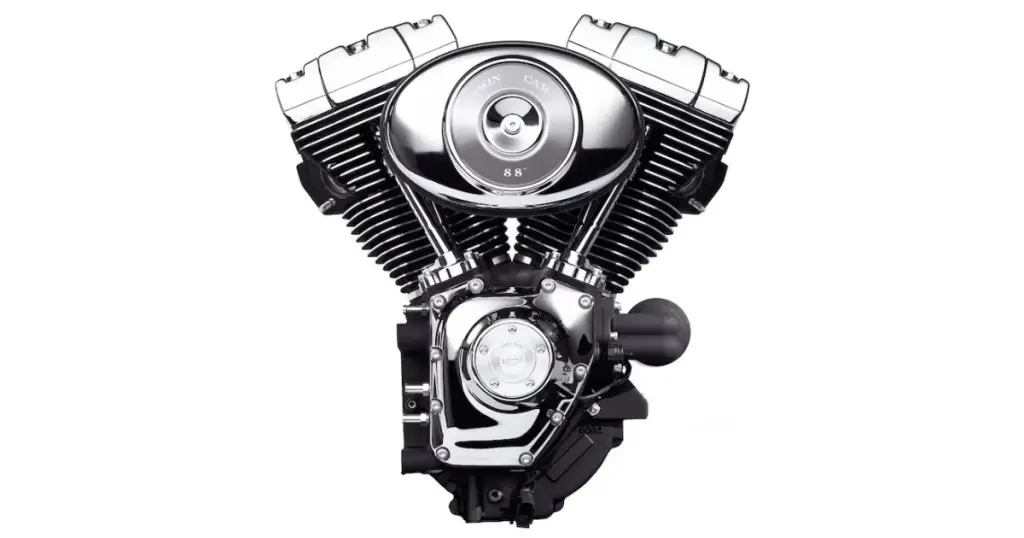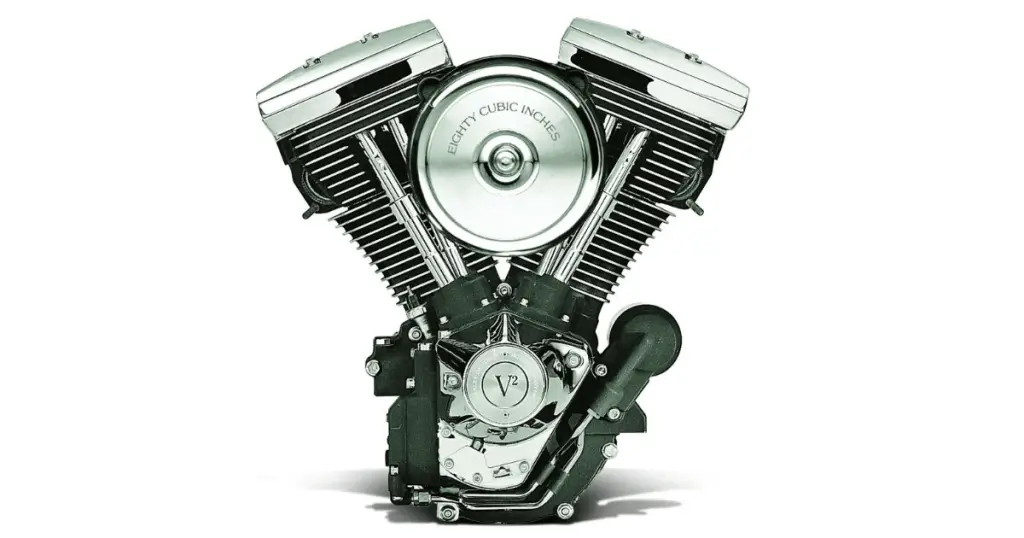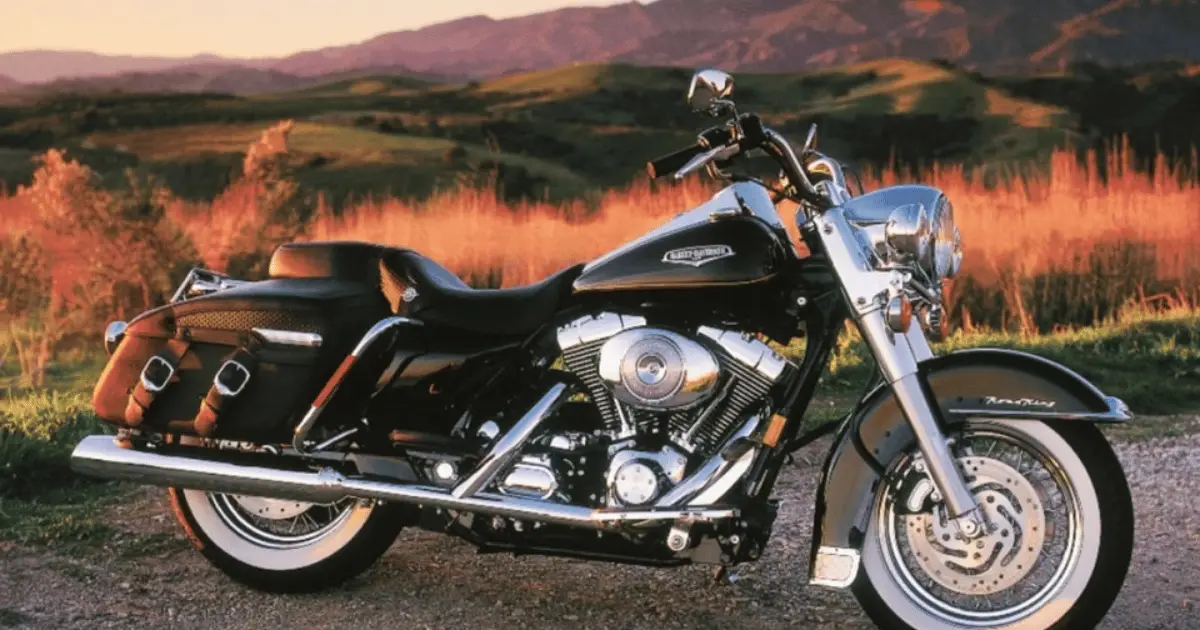Last Updated on January 12, 2024 by Pittalks
When it comes to the powerhouses of Harley-Davidson motorcycles, two distinct engine models often spark heated debates among enthusiasts – the Twin Cam and the Evolution, often referred to as the Evo. Each camp has its loyalists, and each engine has its strengths. But which one truly reigns supreme? Let’s delve into a thorough comparison of these iconic Harley engines and find out!
Twin Cam Engine Overview

The Twin Cam engine made its debut in 1999, with Harley Davidson’s intent to create a more robust engine that would address and overcome the shortcomings of the Evolution engine. This engine aimed to be leak-free, offer increased performance potential, and comply with EPA standards. Furthermore, it needed to be reliable.
The Twin Cam engine, staying true to the classic V-twin profile, opted for a dual camshaft design. This engine design came with improved fuel injection and a larger displacement than the Evo engine. As a result, the Twin Cam engine was incorporated into various Harley-Davidson models, including Dynas, Softails, Sportsters, and Touring bikes.
What Models Used The Twin Cam Engines?
The Twin Cam engine was utilized in a broad range of Harley-Davidson motorcycles. These included the Softail, Touring, Dyna, and Sportster families. Harley’s latest Twin Cam engine was released in mid-1998 and became a staple in rubber-mounted big twins from 1999 to 2000.
What Engine Sizes Were Available?
The Twin Cam engine provided diverse size options to cater to different riders’ preferences. Size variations ranged from the initial 88 cubic inches (cubic centimeters) to later models offering up to 110 cubic inches.
Related engines:
– Harley 103 Engine: Power and Problems Unveiled (Good Motor or No?)
– Twin Cam 88 vs 96: Which TC Is Really The King?
– Is The Twin Cam 96 A Good Motor? Yes, No, Maybe So
Overview of Common Twin Cam Engine Problems
Like any mechanical device, the Twin Cam engine had its share of problems. Some of the common issues included:
- Cam chain problems due to poor design
- Engine smoking due to piston ring wear
- Bearing issues
- Valve seal issues
- Problems with engine block if it has been tuned like Stage 2 or Stage 3
While these issues were noted, it is essential to remember that with proper maintenance and care, many of these potential problems can be mitigated.
Another problem of note: How To Diagnose and Fix A Worn Out Harley Compensator (It’s Easy)
What’s The Average Lifespan of Twin Cam Engines?
The Twin Cam engine’s longevity is often lauded, with many riders reporting that with proper care and maintenance, their Twin Cam engines have surpassed the 100,000-mile mark.
Read more: Best Year Harley Twin Cam Engine: A Surprising Overview
Evolution Engine Overview

Introduced in 1984, the Evolution, or Evo, engine is considered a Harley-Davidson classic. Known for its simplicity, reliability, and easy maintenance, the Evo engine is a favorite among many Harley enthusiasts. With a displacement of 69 cubic inches (cubic centimeters), the Evo engine provided a respectable amount of torque and offered a smooth ride.
Which Models Used The Evolution Engine?
The Evo engine was a mainstay in nearly all Harley-Davidson Sportster models since its introduction. It also found its place in Softail models, including the Heritage Softail Classic, Fat Boy, Deuce, and the FXS Softail Blackline.
What Engine Sizes Were Available?
The Evo engine offered an array of size options, with displacements varying from 883 cc to 1337 cc.
Overview of Common Evolution Engine Problems
Despite its reputation for reliability, the Evo engine had its share of problems. Common issues included:
- Poor starting
- Speed sensor malfunctioning
- Overheating issues
- Oil pump malfunctioning
- Black smoke due to piston ring issues
- Cam chain issues
While these problems were common, the Evo engine’s simple design made it less prone to certain types of mechanical issues, thereby making it easier to manage and repair.
How Long Does The Evolution Engine Last Usually?
With proper maintenance and care, an Evo engine can last well over the 100,000-mile mark. This engine’s durability is often credited to its simple design and easy maintenance.
Read more: The Best Year Harley EVO Motor: Celebrating Reliability and Style
What’s The Biggest Difference Between The Evo and Twin Cam Engine?

The primary difference between the Twin Cam and Evo engines lies in their design, performance, and transmission systems. The Twin Cam engine has two cams, higher compression ratios, improved fuel injection systems, better spark control, and larger displacement options. On the other hand, the Evo engine is lighter and faster, with its four-speed transmission system.
Evo vs Twin Cam Comparison of Sound
The sound of a motorcycle engine is a significant factor for many riders. In the case of the Evo and Twin Cam engines, both produce a distinct, powerful roar unique to Harley-Davidson. However, the Twin Cam tends to have a deeper, more resonant sound compared to the somewhat lighter, higher-pitched note of the Evo engine.
Design Differences Between The Two
There are several key internal design differences between the Twin Cam and Evo engines. The Twin Cam engine features a dual camshaft design and a wet sump with an internal oil reservoir. In contrast, the Evo engine has a single camshaft design and uses a dry-sump system with an external oil tank.
Evo vs Twin Cam Performance Comparison
When comparing performance, the Twin Cam engine offers more power and efficiency compared to the Evo engine. This is due to its higher compression ratios and improved fuel injection systems. However, the Evo engine, due to its lighter weight and higher speed limit, offers better acceleration and is ideal for long-distance riding.
How Were They Similar?
Despite their differences, the Twin Cam and Evo engines share several similarities. Both engines come equipped with hydraulic lifters and four valves per cylinder. They also share the iconic V-twin configuration and are air-cooled, maintaining Harley’s classic design aesthetic.
Are There More Benefits For One Engine?
The choice between the Twin Cam and Evo engine often boils down to personal preference. The Twin Cam engine offers more torque at lower RPMs and superior fuel economy, making it ideal for riders who prioritize efficiency. On the other hand, the Evo engine’s lighter weight and higher top-end speed can appeal to riders who value speed and agility.
What happens when we fast forward in time? Twin Cam vs Milwaukee 8: Who’s The Harley Engine King?
Which Engine Is Better?
Both the Twin Cam and Evo engines have their strengths and weaknesses. The Twin Cam’s modern design and fuel efficiency make it a strong contender. However, the Evo’s simplicity, reliability, and lighter weight also make it an appealing option. The decision ultimately depends on the rider’s personal preference and riding style.
My Reasoning
My conclusion is based on extensive research and analysis of the Twin Cam and Evo engines, taking into account their design, performance, reliability, and common problems. I also considered the opinions and experiences of numerous Harley-Davidson riders and experts.
Quick Recap
In conclusion, both the Twin Cam and Evo engines are well-designed and reliable, each offering unique benefits. The Twin Cam boasts modern design features, improved fuel efficiency, and more power at lower RPMs. In contrast, the Evo engine impresses with its simplicity, lighter weight, and higher top-end speed. Ultimately, the choice between these two legendary engines boils down to personal preference and riding style.
Whether you’re a fan of the modern Twin Cam or the classic Evo, there’s no denying that both engines embody the power and performance that Harley-Davidson is renowned for.
Frequently Asked Questions
The primary differences between Harley Davidson’s Twin Cam and Evo engines lie in their design, performance, and technology. The Evo engine, produced from 1984 to 1999, is known for its reliability and simpler design. The Twin Cam, introduced in 1999, features a more advanced design with dual camshafts and offers higher power and torque.
Evo engines are often noted for their distinct, deep rumble, which is a result of their single camshaft design and firing sequence. In contrast, Twin Cam engines, with their dual camshafts, tend to have a smoother, more refined sound. The sound difference is subtle but noticeable to seasoned riders.
While the Evo engine is celebrated for its durability and ease of maintenance, the Twin Cam engines generally provide higher performance with more horsepower and torque. The Twin Cam’s dual camshaft design allows for better air and fuel flow, resulting in improved power output.
Both Evo and Twin Cam engines are known for their reliability. However, the simpler design of the Evo engine makes it less prone to certain types of mechanical issues. Twin Cam engines, while reliable, have more components that could potentially require attention, such as the cam chain tensioner system.

